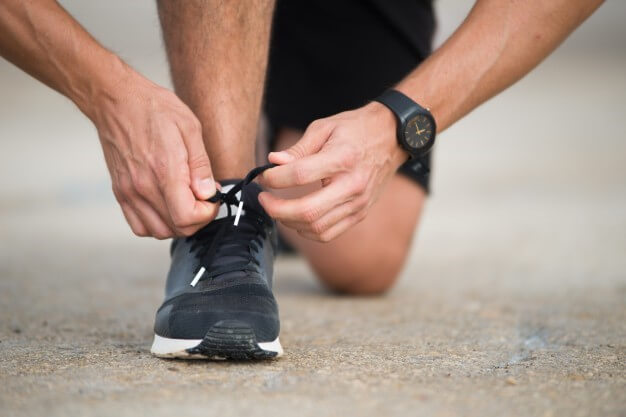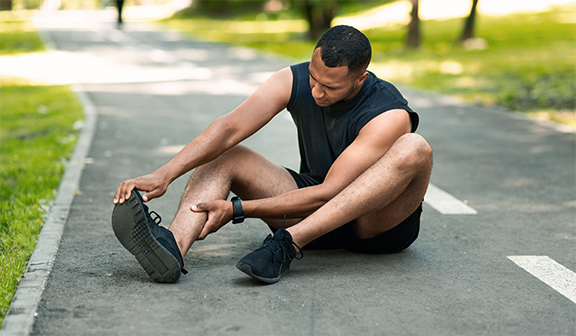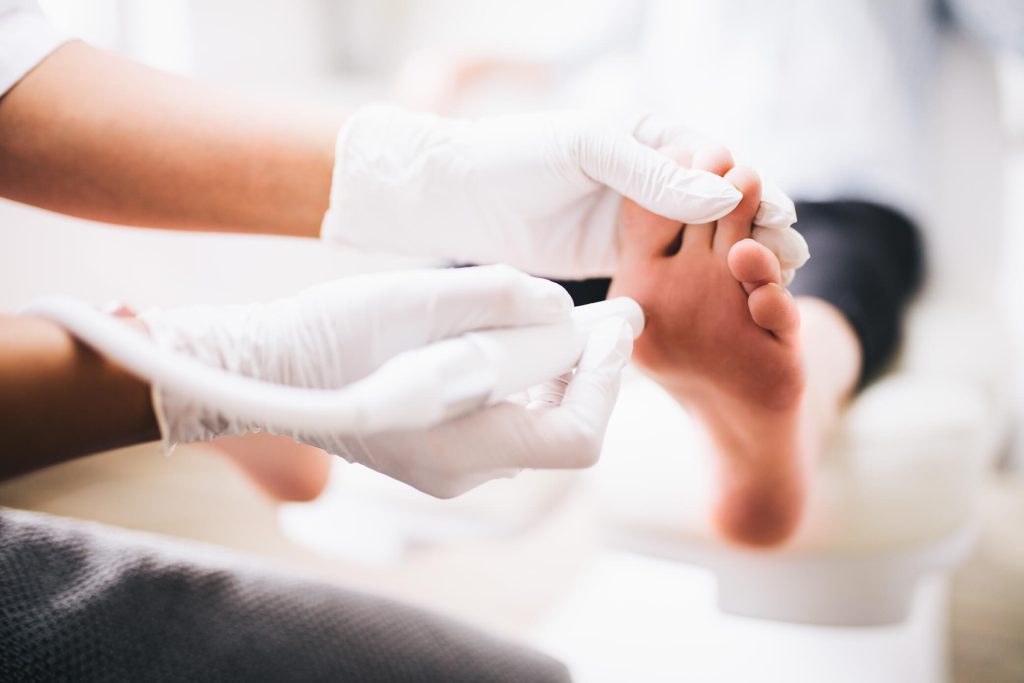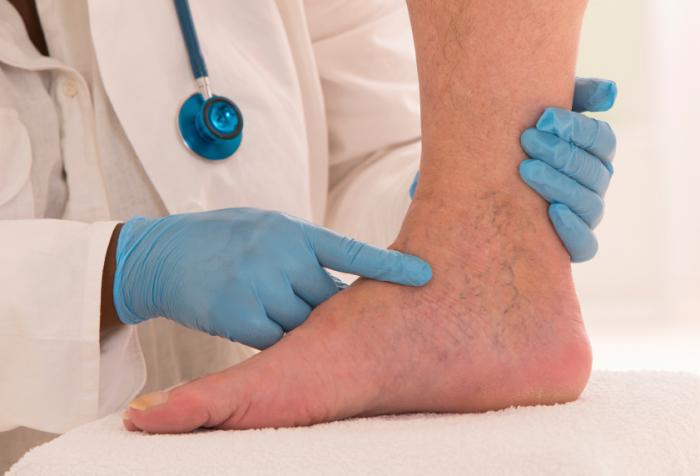Comprehensive diabetic foot screening and foot care Foot problems are a critical cause of morbidity in patients with diabetes. Research shows the lifetime chance of a foot ulcer for patients with type 1 or 2 diabetes is very high. A possibly preventable starting event, most regularly minor injury that causes cutaneous damage, can frequently be identified. These perceptions outline the significance of frequent assessment of the feet in patients with diabetes to recognize those at risk for foot ulceration. According to studies, efficient screening examinations for neuropathic and vascular involvement of the lower limits and cautious review of feet may considerably diminish morbidity from foot problems. Risk Factors Screening of foot in diabetes is a fundamental portion of the examination carried out by the Podiatry Division. The point of this examination is to decide any risk factors as early as possible. The risk of ulcers or amputations is increased in individuals who have the following risk factors: Previous amputation Previous incident of foot ulcer Peripheral neuropathy Foot deformities Poor glycemic control Cigarette smoking Diabetic kidney disease (especially patients on dialysis) Visual impairment Peripheral vascular disease (PVD) Pre-ulcerative callus or corn How does diabetic foot screening work? A diabetic foot exam thoroughly examines the foot health issues in diabetic patients. The issues incorporate infection, injury, and bone abnormalities. Nerve damage and poor blood circulation are the most common causes of diabetic foot issues. It is strongly recommended that individuals with diabetes must do a foot exam at least once a year. You’ll require an exam more regularly in the event that your feet have any of the indications like Tingling, Numbness, Pain, Burning sensation, Swelling, and walking difficulty. A diabetic foot exam is usually being done by a podiatrist. A foot doctor who specializes in keeping feet healthy and treating diseases of the feet is known as a podiatrist. The exam usually includes a few step-by-step assessments. General assessment: Try to know your health history and any problems you’ve had with your feet in the past. Ask questions about your footwear as shoes that don’t fit well or uncomfortable can lead to foot health problems. Dermatological assessment: This is mainly to check for various skin problems such as dry skin, cracking, calluses, blisters, and ulcers. Examines cracked toenail or fungal infection and a thorough fungal infection check will be done between the toes. Neurological assessments: Consist of four other tests such as Monofilament test, Tuning fork and visual perception test (VPT), Pinprick test, and Ankle reflexes test. Monofilament test will check the touch sensitivity of your foot whereas VPT uses a tuning fork against your foot to see if you can feel the vibration. Pinprick test uses a small pin to poke the bottom of your foot to see if you can feel it. During Ankle reflexes test, your reflexes will be tested by tapping your foot with a small reflex hammer. Musculoskeletal assessment: Examines the shape and structure of your foot and it helps in identifying any abnormalities. Vascular assessment: It aims to check the proper blood circulation. Doppler ultrasound imaging technology is used to test the blood flow if you have symptoms of poor circulation. Is there anything more to know? You don’t require any exclusive preparations for a diabetic foot screening. It is always risk-free to have a diabetic foot exam. If a problem is found, the podiatrist will likely recommend more frequent testing. Other treatments may include antibiotics for foot infections and surgery to help with bone deformities. Though there is no treatment for foot nerve damage, there are treatments that can relieve pain and improve function like skincare creams and physiotherapy. Diabetic patients are always prone to a serious risk of foot health. However, you can keep your feet healthy to some extend with caring. Always take care of your diabetes and try to keep your blood sugar normal level. It is strongly recommended to do a foot exam at least once a year and increase the frequency of screening if you or your doctor finds a problem. Observe your feet every day to check for any new issues like wounds, sores, ulcers, toenail cracks, and other changes in your feet. This is always helpful to find and address problems early. Keep your feet neat and clean and wearing shoes and socks at all times is advisable. Do not use shoes that are uncomfortable and unfit. Trim your toenails regularly and gently smooth nail edges. Keep your feet away from excess heat and cold. Aware of good blood circulation and let the blood flowing to your feet. You can choose to put your feet up when sitting. Say a big NO to cigarette smoking as it reduces blood flow to the feet and causes slow healing of wounds. All patients with diabetes and particularly those with high-risk foot conditions and their families should be provided general education about risk factors and appropriate management. Always remember: Inspect and wash your feet daily Carefully trim nails Wear properly fitting shoes and don’t go barefoot Manage diabetics by having good diet, right exercising, monitoring blood sugar and regularly taking your medications. If you do notice any sores on your feet, see your health care provider as soon as possible. WE HELP YOU STAND ON YOUR FEET Health & Style Medical Centre, the first private podiatry practice in Abu Dhabi, aspire to provide the most up to date knowledge and understanding of the lower limb whilst delivering world class service to our patients with the aid of state of the art Podiatry equipment. HSMC will do most effective and advanced diabetic foot screening. Click – https://hsmc.me/ https://hsmc.me/contact-us/











